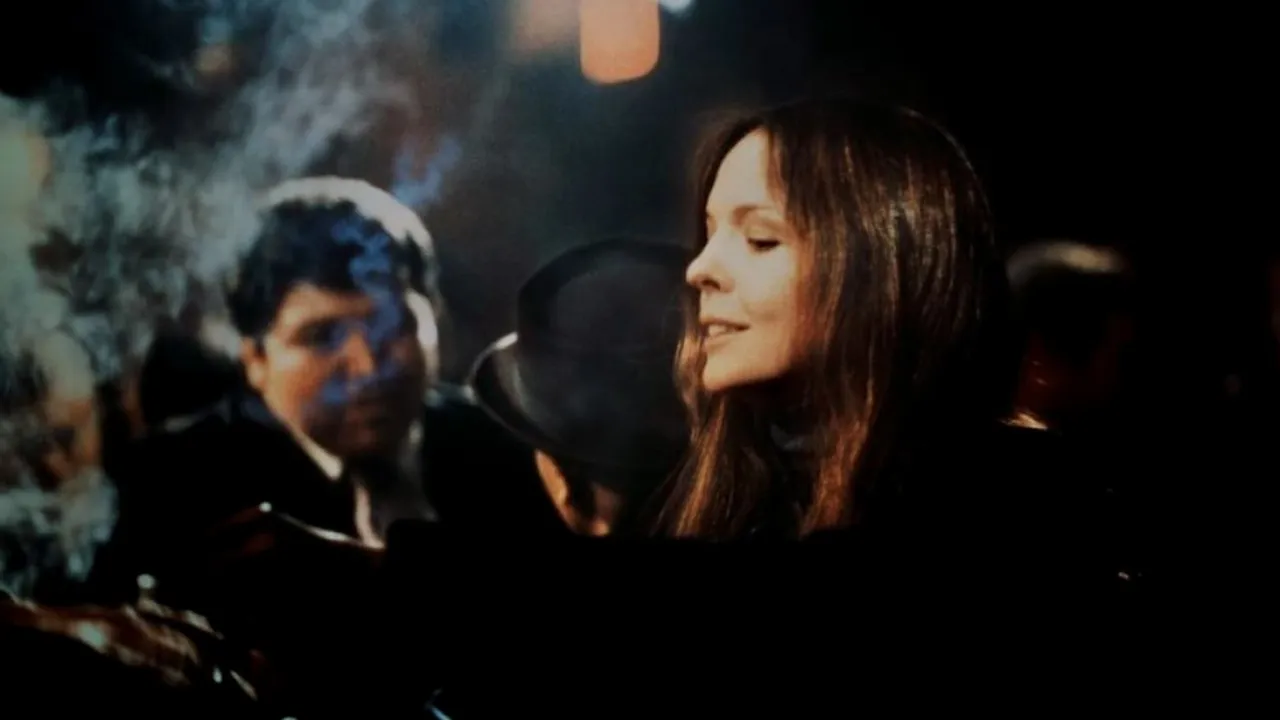
Sexual revolution and other socioeconomic trends allowed Baby Boomers to enjoy sexual freedom and other hedonistic delights unimaginable ever before in modern history. However, a lifestyle based on unrestrained sex and drugs brought itself new problems and serious risks, which were explored as a plot in Looking for Mr. Goodbar, 1977 drama directed by Richard Brooks.
The film is based on the best-selling 1975 novel by Judith Rossner, itself inspired by real life case of Roseann Quinn, New York schoolteacher whose brutal murder revealed her double life. The protagonist, played by Diane Keaton, is Therese Dunn, young woman brought up in traditional Catholic family. At college she has an affair with married professor Martin (played by Alan Feinstein) who leaves her before graduation. She takes a job as a teacher in school for deaf children and excels at her job, earning respect of her pupils and colleagues. However, her private life is less orderly and, after moving from her family home into new apartment, she begins to spend nights cruising bars in search for casual sex. This leads to relationship with Tony (played by Richard Gere), charming but vain Italian American man who would introduce her to cocaine and other party drugs. Her job, on the other hand, introduces her to James (played by Willliam Atherton), social worker whose traditional morals make him “safe” and reliable choice as her romantic partner. Theresa ultimately finds both alternatives too constraining and instead continues with her increasingly promiscuous lifestyle. That would ultimately lead her to Gary (played by Tom Berenger), good-looking young man who is actually bisexual ex convict with tendency for sudden outbursts of brutal violence.
If there is a film that Looking for Mr. Goodbar should be compared to, it is Saturday Night Fever. Both films depict nightlife in 1970s urban America, both feature soundtrack based on disco and both serve as some sort of time capsule of lifestyles and social mores characteristic for those times. Those comparison also might explain why Fever remained as one of the most iconic films of its time, while Goodbar, despite modest success at box-office, quickly sank to obscurity. The main reason is terribly inept and misguided direction by Richard Brooks, who apparently took the darkness of the original story too literally and tried to match it with dark cinematography that makes characters too confusing. Bad editing, including “artsy” scenes in which Therese’s reality alternates with her bizarre fantasies, makes confusion even worse. Finally, there is also serious issue with pacing that would make this film challenging to watch even to audience accustomed to plots unfolding slowly.
The only bright spot in this film happens to be Diane Keaton. Obviously excited with opportunity to display her acting range in a role quite different from those in Woody Allen’s films or The Godfather (which is, semi-ironically, referenced in the film), Keaton delivers very good performance, which also includes explicit sex and nudity. The rest of the cast is mostly solid, and that includes even young Richard Gere whose semi-naked appearance would probably delight female audience and whose energetic performance would later make him great star, although initially typecast in roles of studs. Berenger is also good, despite having thankless role of character which is both despicable, pathetic but ultimately dangerous. Tuesday Weld, on the other hand, sometimes tries too hard in the role of Therese’s older and “liberated” sister which enthusiastically embraces new sexual freedoms like divorce, abortion, porn film and swinger parties.
One of the reasons for relative obscurity of Looking for Mr. Goodbar could also be found in its content having insufficient “political correctness” for later times. Even during premiere some of the critics attacked the film as anti-feminist and reactionary in its values. Some feminists today would, on the other way, attack this film simply because the protagonists has sexual relations with men despite all forms of masculinity, as depicted in this film, being toxic. On the other hand, this film also shows how times quickly change. The best example is the scene in which Martin attempts to use condoms while with Therese, only to be mercilessly mocked for relying on such obsolete and useless tool; this scene became rather outdated in 1980s with AIDS pandemic during which condoms became next to obligatory for sex. It could be argued that the similar change, although in opposite direction, might happen with bars, at least in case COVID-19 pandemic with its lockdowns and curfews becomes permanent.
RATING: 3/10 (+)
Blog in Croatian https://draxblog.com
Blog in English https://draxreview.wordpress.com/
Leofinance blog @drax.leo
Cent profile https://beta.cent.co/@drax
Minds profile https://www.minds.com/drax_rp_nc
Uptrennd profile https://www.uptrennd.com/user/MTYzNA
Hiveonboard: https://hiveonboard.com?ref=drax
Rising Star game: https://www.risingstargame.com?referrer=drax
1Inch: https://1inch.exchange/#/r/0x83823d8CCB74F828148258BB4457642124b1328e
BTC donations: 1EWxiMiP6iiG9rger3NuUSd6HByaxQWafG
ETH donations: 0xB305F144323b99e6f8b1d66f5D7DE78B498C32A7


